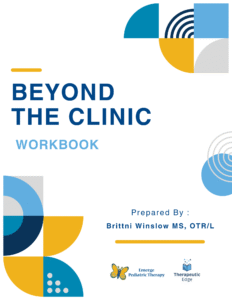
Did anyone else graduate from school only to feel that their education around primitive reflexes was lacking? You aren’t alone if you feel that way (Psst…spoiler alert, scroll to the bottom for a link to a course that can change this for you). As a pediatric occupational therapist, I have made a habit of assessing primitive reflexes during my initial evaluations. However I know many of my team haven’t always had the confidence to do so.
There is a tremendous amount of value in assessing primary movement patterns and using reflex integration in practice for things like:
Because it’s often overlooked in graduate school, at my private practice we have made it a priority to do some basic training and review of these reflexes anytime we have a new practitioner join the team. But the question remains, could we and should we be doing more in regards to educating ourselves/our teams on reflex integration for the sake and betterment of the care we provide to clients in need? The answer is yes.
Even as a seasoned practitioner, I am still hungry to learn and hone my skills. So when I was presented the opportunity to meet with Sonia Story, the creator of the Brain and Sensory Foundations® course and creator of the Move, Play, Thrive website I jumped at the chance.
Sonia has a great set of resources, such as this free reflexes chart. On this chart, you will find 22 infant reflexes and possible long-term effects that can occur when they are unintegrated. If that chart sparks your interest as it did mine, her Brain and Sensory Foundations® tools will certainly engage you. These tools teach how to use calming infant movements to drive the development of the brain, body, and sensory systems. These movements are important for children and adults with anxiety and neurodevelopmental challenges, and the tools offer hope to unlock motor, learning, and social-emotional skills.
After our meeting, I had to sign up for the Brain and Sensory Foundations® First Level course myself. My oldest daughter is dyslexic and has anxiety and ADHD. She has tremendous support, and (usually) a “can-do” attitude but the rigor of coursework in 4th grade has been a challenge. Drawing the connections between these movements and handwriting and reading and ADHD made me all the more eager to sign up and learn more. Not only will it support my clinical knowledge but it’s a tool I can take home with me to support my daughter.
Intrigued? Did a kiddo from your own life pop into your mind as you read this?
Join me by signing up for the Brain and Sensory Foundations® First Level course! Leave a comment here or tag me in a post on social media (@therapeuticedge.collective).

Written by: Brittni Winslow, MS, OTR/L
The Therapeutic Edge is an affiliate partner of Move, Play, Thrive and may earn a commission.


